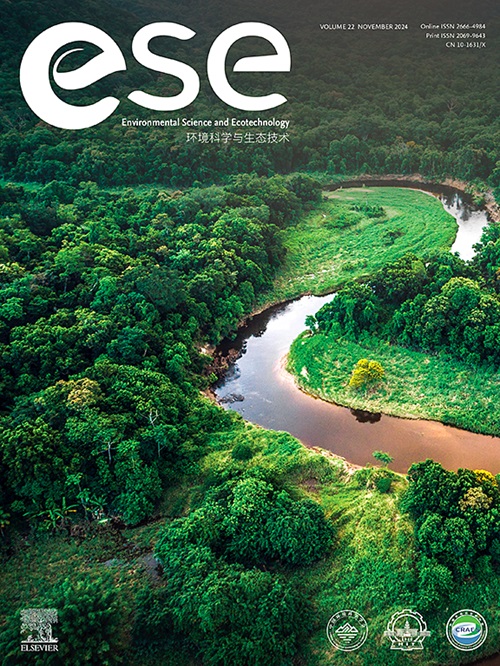Phytoremediation of microplastics by water hyacinth
IF 14.3
1区 环境科学与生态学
Q1 ENVIRONMENTAL SCIENCES
引用次数: 0
Abstract
Microplastics have emerged as pervasive environmental pollutants, posing significant risks to both terrestrial and aquatic ecosystems worldwide. Current remediation strategies—including physical, chemical, and microbial methods—are inadequate for large-scale, in situ removal of microplastics, highlighting the urgent need for alternative solutions. Phytoremediation, an eco-friendly and cost-effective technology, holds promise in addressing these challenges, though its application to microplastic pollution remains underexplored. Here we show the capacity of Eichhornia crassipes (water hyacinth), a fast-growing, floating aquatic plant, to remove microplastics from contaminated water. Our results show that within 48 h, water hyacinth achieved removal efficiencies of 55.3 %, 69.1 %, and 68.8 % for 0.5, 1, and 2 μm polystyrene particles, respectively, with root adsorption identified as the primary mechanism. Fluorescence microscopy revealed that the extremely large and abundant root caps, featuring a total surface area exceeding 150,000 mm2 per plant, serve as the principal sites for the entrapment of microplastics. Furthermore, a unique “vascular ring” structure within the stem prevents the translocation of microplastics to aerial tissues, safeguarding leaves for potential downstream applications. This study offers the first microstructural insight into the mechanisms underpinning water hyacinth's exceptional microplastic adsorption capacity and resilience, providing a promising framework for developing phytoremediation strategies to mitigate microplastic pollution in aquatic ecosystems.

水葫芦对微塑料的植物修复
微塑料已成为普遍存在的环境污染物,对全球陆地和水生生态系统构成重大风险。目前的修复策略——包括物理、化学和微生物方法——不足以大规模就地去除微塑料,因此迫切需要替代解决方案。植物修复技术是一种生态友好且具有成本效益的技术,有望解决这些挑战,尽管其在微塑料污染中的应用仍未得到充分探索。在这里,我们展示了水葫芦(水葫芦),一种快速生长的漂浮水生植物,从污染的水中去除微塑料的能力。结果表明,在48 h内,水葫芦对0.5 μm、1 μm和2 μm聚苯乙烯颗粒的去除率分别为55.3%、69.1%和68.8%,其中根吸附是主要机理。荧光显微镜显示,极其巨大和丰富的根冠,其总表面积超过150000平方毫米,是微塑料捕获的主要场所。此外,茎内独特的“维管环”结构可以防止微塑料转移到空中组织,保护叶片的潜在下游应用。该研究首次从微观结构上深入了解水葫芦具有优异的微塑料吸附能力和弹性的机制,为开发植物修复策略以减轻水生生态系统中的微塑料污染提供了一个有希望的框架。
本文章由计算机程序翻译,如有差异,请以英文原文为准。
求助全文
约1分钟内获得全文
求助全文
来源期刊

Environmental Science and Ecotechnology
Multiple-
CiteScore
20.40
自引率
6.30%
发文量
11
审稿时长
18 days
期刊介绍:
Environmental Science & Ecotechnology (ESE) is an international, open-access journal publishing original research in environmental science, engineering, ecotechnology, and related fields. Authors publishing in ESE can immediately, permanently, and freely share their work. They have license options and retain copyright. Published by Elsevier, ESE is co-organized by the Chinese Society for Environmental Sciences, Harbin Institute of Technology, and the Chinese Research Academy of Environmental Sciences, under the supervision of the China Association for Science and Technology.
 求助内容:
求助内容: 应助结果提醒方式:
应助结果提醒方式:


